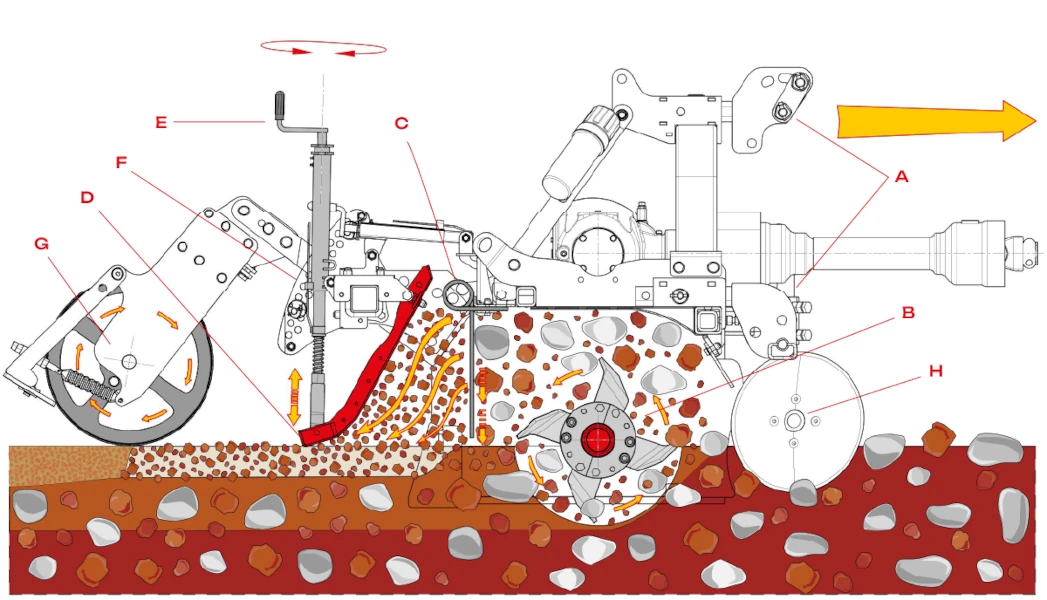
Operating principle ROTOSTONE
Operating principle ROTOSTONE
This machine, connected to a tractor with power appropriate to its specifications via a three-point linkage (A), is designed to eliminate surface stones and crop residues in a single pass.
Its main working component is the rotor with blades (B), equipped with specially shaped tools that rotate counterclockwise, projecting stones, soil, grass and debris against the selection grill (C).
The coarse material falls into the trench created by the working depth of the rotor and is then covered by finely tilled soil using the levelling board (D), creating a perfect seedbed. The firmness of the bed can be adjusted via the pressure handle (E).
The selection grill (C), in addition to its sieving function, allows the operator to work in particularly demanding conditions. The vibrating system ensures constant cleaning between sections, even in wet or damp soil, resulting in a continuous and smooth soil flow.

Moreover, the ability to adjust the working angle of the selection grill enables deeper operation with less power requirement.
The working depth is adjustable depending on the model via handwheels (F), which determine the position of the rear wheels (G).
The external side discs (H) are mounted in the front to facilitate penetration and improve working depth. These open a passage that prevents the side chain guard from dragging on the ground before the rotor.
A wide range of accessories can be paired with the stone burier, allowing the operator to work in various sectors:
green area creation and maintenance, horticulture, floriculture, golf course construction, land reclamation, and inter-row grassing in vineyards, orchards, and nurseries.

Operational advantages
- Soil is processed “from the bottom up”, similar to the spading principle, avoiding the compaction typical of traditional rotary tillers.
- Simultaneous screening and burying of clods, stones, and residues in a single pass.
- Improved drainage and reduced soil compaction.
- Faster germination (up to 3 days earlier for tomato), increased yield, and reduced initial water requirements.
Performance
A 3-metre Rotostone stone burier can process approximately 1 hectare per hour, depending on soil type, leaving a perfectly finished seedbed ready for sowing or transplanting. Achieving the same result with a rotary tiller would require 2–3 passes, leading to higher fuel consumption, more soil disturbance, and greater compaction.
Versatility
Another major advantage is the ability to quickly convert the stone burier into a bed former shaper, making it a multipurpose tool suitable for various applications. (This system is available across all models.)
Key benefits
- • Reduced working time and fewer passes.
• Lower fuel consumption and emissions.
• Higher productivity.
• Increased water retention capacity of the soil.
• Operational versatility and multipurpose use.